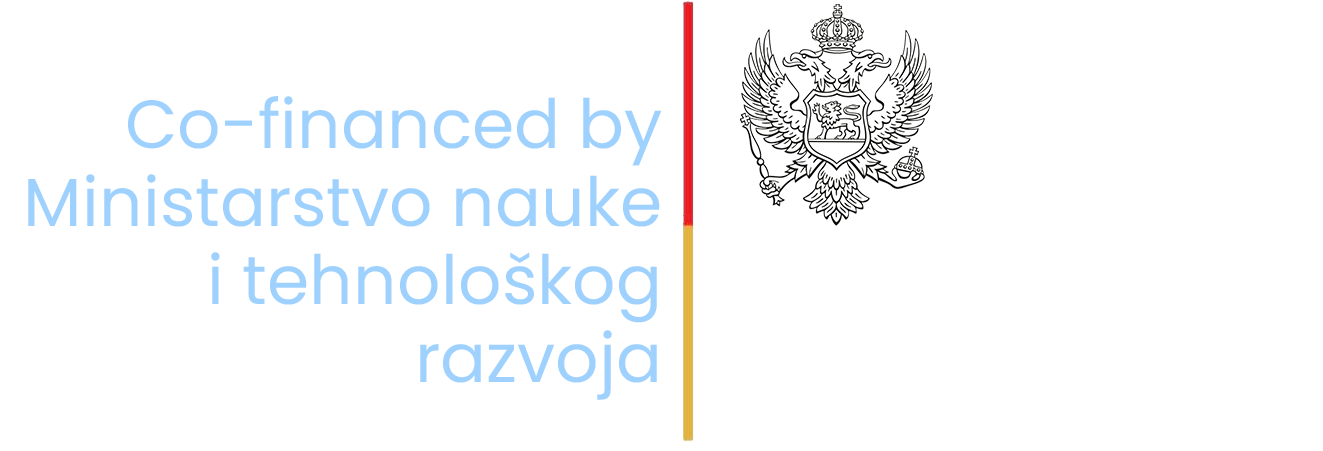ICT Cortex – compass for digital transformation of Montenegro

On March 9, 2021, the European Commission presented the vision and directions of the digital transformation of Europe until 2030. You can find the original announcement at this link, and at the same link you can also download the complete document “2030 Digital Compass: the European way for the Digital Decade”, which the EU Commission sent to the European Parliament, the Council of Europe, the European Economic and Social Committee and the Committee region. The mentioned strategy is very important for defining the strategic directions for the digital transformation of Montenegro, and you can read below how the president of the assembly of ICT Cortex – Branimir Bukilić, views it from an expert point of view. “The vision for the EU digital decade is developed around four key coordinate points: skills, infrastructure, economy, and public administration, while the EU has strategically determined these four points as goals that must be achieved by 2030. We are pleased with the fact that we at ICT Cortex have recognized the relevant key points as the basis of our association, in order to provide the conditions for their realization and that we are therefore aware of the need to speed up the digital transformation processes of Montenegro. When it comes to the coordinate points listed in the strategy, I’ll start with skills. Digital skills are put in the foreground because without them all other goals are not achievable. The EU admits that it lags significantly behind other markets in terms of digital skills. It is even stated that the key digital technologies are still produced outside the EU, which is also the case with Montenegro. We understand that we are forced to import hardware systems, but we must work on educating new and existing staff, and increasing digital knowledge both qualitatively and quantitatively in companies that develop IT products and solutions so that we have the opportunity for domestic IT companies to be the bearers of digital transformation. Digital education of citizens is mentioned as an important segment in the process: “It is necessary for us to have digitally capable citizens who will be users of modern IT solutions and services, which will lead to a significant acceleration of Public Administration and the economy, which inevitably leads to economic growth. And we have to do this at an accelerated pace because Montenegro’s goal must not only be to reach the EU level, but to reach the level of countries that are responsible for the development of digital services, which is what the EU itself strives for. The EU target of 80% of the population with basic digital skills does not seem so far-fetched at first glance. However, we have to be careful with this assessment.” As a link between the above and the goals of ICT Cortex, Bukilić states that the activity of the cluster aims to encourage the creation of an environment for the significantly faster creation of new IT personnel. The results of the research, which were carried out at the end of last year, showed that over 86% of IT companies or the IT sector in other companies need to create new jobs, and over 90% of respondents determined that they have difficulties in finding professional staff who can be carriers of development. For this reason, all members of the association are involved in the creation of new programs for the education of future programmers, designers, project managers, etc. Infrastructure is an inevitable factor in any field, including IT. The EU has set high goals in this area, which are mainly related to improving the very poor share of European manufacturers of microchips, cloud solutions, and supercomputers at the global level. The goal of improving the network infrastructure, that is, the availability and quality of the Internet connection, was also recognized. “Technologically speaking, a gigabit connection for every citizen and 5G across the entire territory of the EU may not seem like unattainable goals like in other critical areas. Somehow we in Montenegro also believe that these goals are possible or that we can get significantly closer to them by 2030. However, the economic sustainability of these goals is questionable in Montenegro. Montenegro’s aspiration to join the European Community is also justified by the fact that it is practically impossible for us to work independently on the development of microchips or supercomputers and even cloud computing. Even when we are in the EU, we should focus on other areas, and use the relevant resources of other members of the community. As for Montenegro, I would also include legislation in the infrastructure. It is necessary to modernize the existing legal solutions concerning digital infrastructure because we are aware that they have not been changed for a long time, that is to say, the dynamics of their harmonization do not follow the dynamics of technological development. In addition to these essential legal solutions, we must also work on the implementation of the adopted legal solutions that will ensure the strengthening of the domestic IT industry, facilitate and relieve new employment in the IT industry, that is, in innovative activities, trace new directions of digital education of citizens through primary, secondary and higher education. I see ICT Cortex as a particularly important link in these segments. Strengthening the IT industry will contribute to its competitiveness, the ability to carry out the digital transformation of Public Administration and the economy and create new export potentials, and these are the main goals of ICT Cortex,” concludes Bukilić. The economy, as the carrier of the economy of every society, is the third key point of the EU Digital Compass. Experiences due to the Covid 19 pandemic both in the EU and in our country indicate that the adoption of digital skills has become necessary for many companies. Unfortunately, this global scourge has had the effect of increasing businessmen’s awareness of the need to digitize their business processes. The EU Commission predicts that by 2030, digital technologies such as 5G, IoT – Internet of Things, supercomputers, artificial


